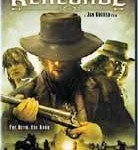Explore Articles Filed Under: Books and Art

Tulku is a group with constantly shifting membership gathered around multitalented musician and producer Jim Wilson. Wilson has worked with many of the most important figures in contemporary Native American music — Robbie Robertson, the Little Wolf Band, Joanne Shenandoah, Primeaux and Mike. Wilson’s work has centered on intriguing cross-cultural musical collaborations — with Russian psychiatrist Olga Kharitidi on Siberian shamanism, with Consuelo Luz on ancient Sephardic prayers and traditional love songs in Ladino, with James Twyman on peace prayers from world religious traditions. He has worked musically with spoken word material from Timothy Leary, Alan Ginsberg, and Timothy Wyllie.

The movie Blueberry is an adaptation of a Western comic book series written by Jean-Michel Charlier and illustrated by Jean Giraud, also known as Moebius, a science-fiction artist of considerable distinction. The movie is loosely based on two issues of these comic books — so loosely, in fact, that the film was disowned by the family of the deceased Charlier. What’s a Shipibo shaman doing in the Old West?

Olivier Messiaen (1908-1992) was a major figure in twentieth-century music. He is often regarded as the most important French composer since Debussy, and he was certainly one of the most influential composers of the century in any country. His music redefined the avant-garde, yet is often tonal, accessible, and strikingly beautiful. Throughout his life he was a devoted Catholic, and many of his works have strongly Catholic themes — for example, Messe de la Pentecote, La Transfiguration de Notre Seigneur Jésus-Christ, St. Francis d’Assise. What does he have to do with ayahuasca?

Ojibwa painter Norval Morrisseau, one of Canada’s most celebrated artists, died at Toronto General Hospital on Tuesday morning, at the age of 75. Morrisseau was the creator and spiritual leader of the Woodland Indian art movement, both in Canada and in the northeast United States, inspiring generations of native artists.

Richard Doyle is currently Associate Professor of Rhetoric in the Department of English at Penn State University. He received his PhD from the University of California–Berkeley in 1993, and is the author of two books of interdisciplinary scholarship on science and technology. Doyle has written a on his own ayahuasca experience. And he is now working on a new book on the history of archaic and contemporary ecstatic practices and their role in the biological and technological evolution of human beings.

The Society for Shamanic Practitoners has announced a new journal, The Journal of Shamanic Practice: Exploring Traditional and Contemporary Shamanism, with a first issue due out in February, 2008. The journal is intended to provide an international forum for publication and discussion of scholarly, peer-reviewed, and methodologically sound work focusing on the practice of traditional and contemporary shamanism in historical and cultural context.
Ayahuasca — both the ayahuasca drink and ayahuasca shamanism — has been subject to the forces of globalization and modernity that have affected every other aspect of Amazonian life. The results of this encounter have been mixed, on both sides — on the one hand, new forms of literature and art, new religious movements, experiments in religious organization; on the other hand, oppression, exploitation, and the piracy of valuable traditional knowledge.
Icaros, the sacred songs of the Amazonian shamans, are traditionally sung either unaccompanied or with the rhythmic shaking of the shacapa, the leaf-bundle rattle. Recently, however, there has been some experimentation with additional instrumentation. Don Agustin Rivas Vasquez, for example, sings his icaros using a variety of drums, pan pipes, maracas, a harmonica, and a stringed instrument of his own devising, as well as a variety of singing styles, some sounding very much like Peruvian popular music.

Discussing the article:
Hallucinogens in Africa